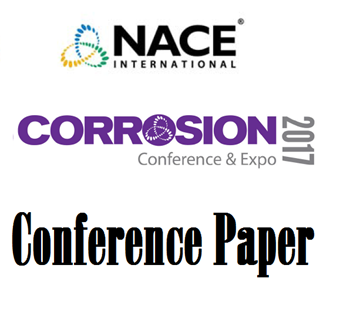View as
Sort by
Display
per page

Available for download
Product Number:
51317--9564-SG
ISBN:
9564 2017 CP
Author:
Shokrollah Hassani
Publication Date:
2017
$20.00
We're sorry, something went wrong.
We are unable to complete this action. Please try again at a later time.
If this error continues to occur, please contact AMPP Customer Support for assistance.
Error Message:
Please login to use Standards Credits*
* AMPP Members receive Standards Credits in order to redeem eligible Standards and Reports in the Store
You are not a Member.
AMPP Members enjoy many benefits, including Standards Credits which can be used to redeem eligible Standards and Reports in the Store.
You can visit the Membership Page to learn about the benefits of membership.
You have previously purchased this item.
Go to Downloadable Products in your AMPP Store profile to find this item.
You do not have sufficient Standards Credits to claim this item.
Click on 'ADD TO CART' to purchase this item.
Please review your transaction.
Click on 'REDEEM' to use your Standards Credits to claim this item.
You have successfully redeemed:
Go to Downloadable Products in your AMPP Store Profile to find and download this item.

Available for download
Product Number:
51324-21175-SG
Author:
Karen Picker; Luiza Esteves
Publication Date:
2024
$40.00
A refinery in the U.S. Gulf Coast had been using carbon steel tubes in two crude unit overhead condensers that suffered severe corrosion leading to premature failure after just 6 months in service. The metallurgy of the tube bundles was later upgraded to super duplex, UNS S32750, and hyper duplex stainless steel (DSS), S32707, which extended the service life to 12 months and two years, respectively. Failure analysis of the DSS indicated that the corrosion started as under-deposit corrosion. Selective corrosion occurred, where the ferrite phase suffered a preferential corrosion attack. Super Austenitic Alloy 35, UNS N08935, was recommended as an economical alternative to nickel Alloys 625 (UNS N0625 and C-276 (UNS N10276). Material selection and life-cycle cost analysis helped the end user select the super austenitic Alloy as the material of choice for the upgrade. The bundles have been in service for more than two years. This paper evaluates the materials selection process, fabrication cost, and life cycle cost analysis of the different Alloys used in these bundles since the first carbon steel upgrade through the present time.
We're sorry, something went wrong.
We are unable to complete this action. Please try again at a later time.
If this error continues to occur, please contact AMPP Customer Support for assistance.
Error Message:
Please login to use Standards Credits*
* AMPP Members receive Standards Credits in order to redeem eligible Standards and Reports in the Store
You are not a Member.
AMPP Members enjoy many benefits, including Standards Credits which can be used to redeem eligible Standards and Reports in the Store.
You can visit the Membership Page to learn about the benefits of membership.
You have previously purchased this item.
Go to Downloadable Products in your AMPP Store profile to find this item.
You do not have sufficient Standards Credits to claim this item.
Click on 'ADD TO CART' to purchase this item.
Please review your transaction.
Click on 'REDEEM' to use your Standards Credits to claim this item.
You have successfully redeemed:
Go to Downloadable Products in your AMPP Store Profile to find and download this item.

Available for download
Product Number:
51323-19284-SG
Author:
Raeesa Bhamji, Frederick Pessu, Joshua Owen, Richard Barker
Publication Date:
2023
$20.00
We're sorry, something went wrong.
We are unable to complete this action. Please try again at a later time.
If this error continues to occur, please contact AMPP Customer Support for assistance.
Error Message:
Please login to use Standards Credits*
* AMPP Members receive Standards Credits in order to redeem eligible Standards and Reports in the Store
You are not a Member.
AMPP Members enjoy many benefits, including Standards Credits which can be used to redeem eligible Standards and Reports in the Store.
You can visit the Membership Page to learn about the benefits of membership.
You have previously purchased this item.
Go to Downloadable Products in your AMPP Store profile to find this item.
You do not have sufficient Standards Credits to claim this item.
Click on 'ADD TO CART' to purchase this item.
Please review your transaction.
Click on 'REDEEM' to use your Standards Credits to claim this item.
You have successfully redeemed:
Go to Downloadable Products in your AMPP Store Profile to find and download this item.



